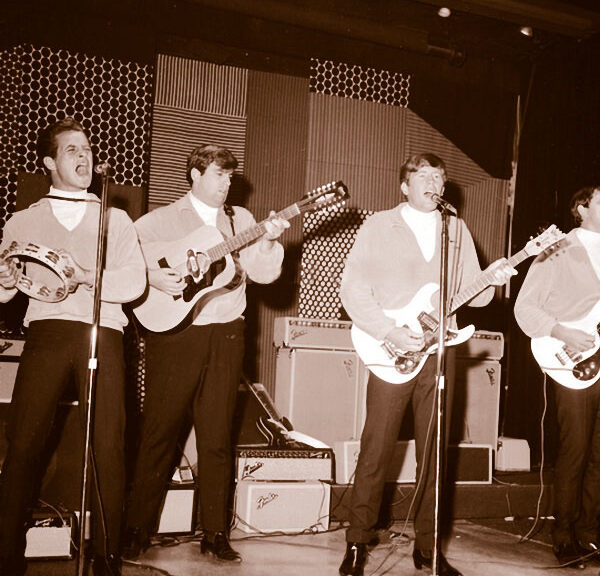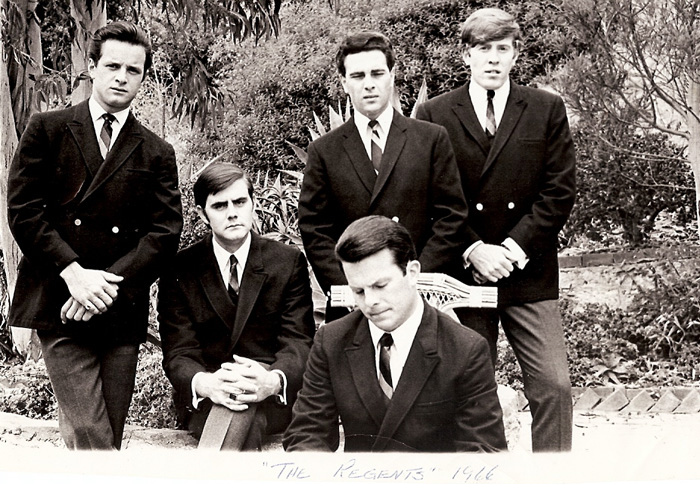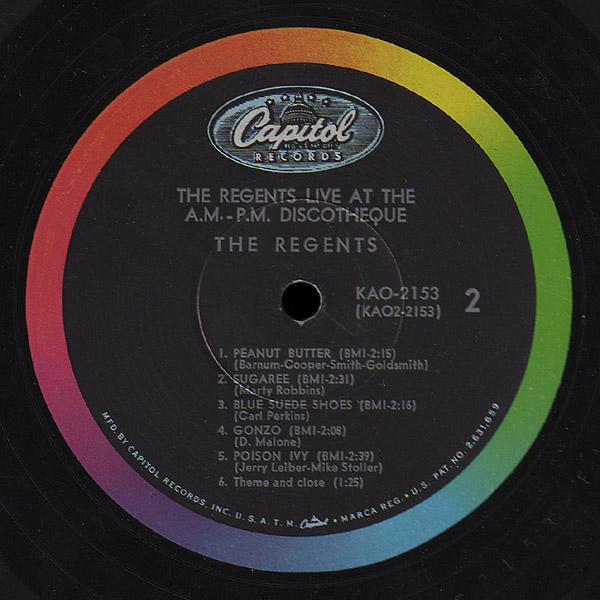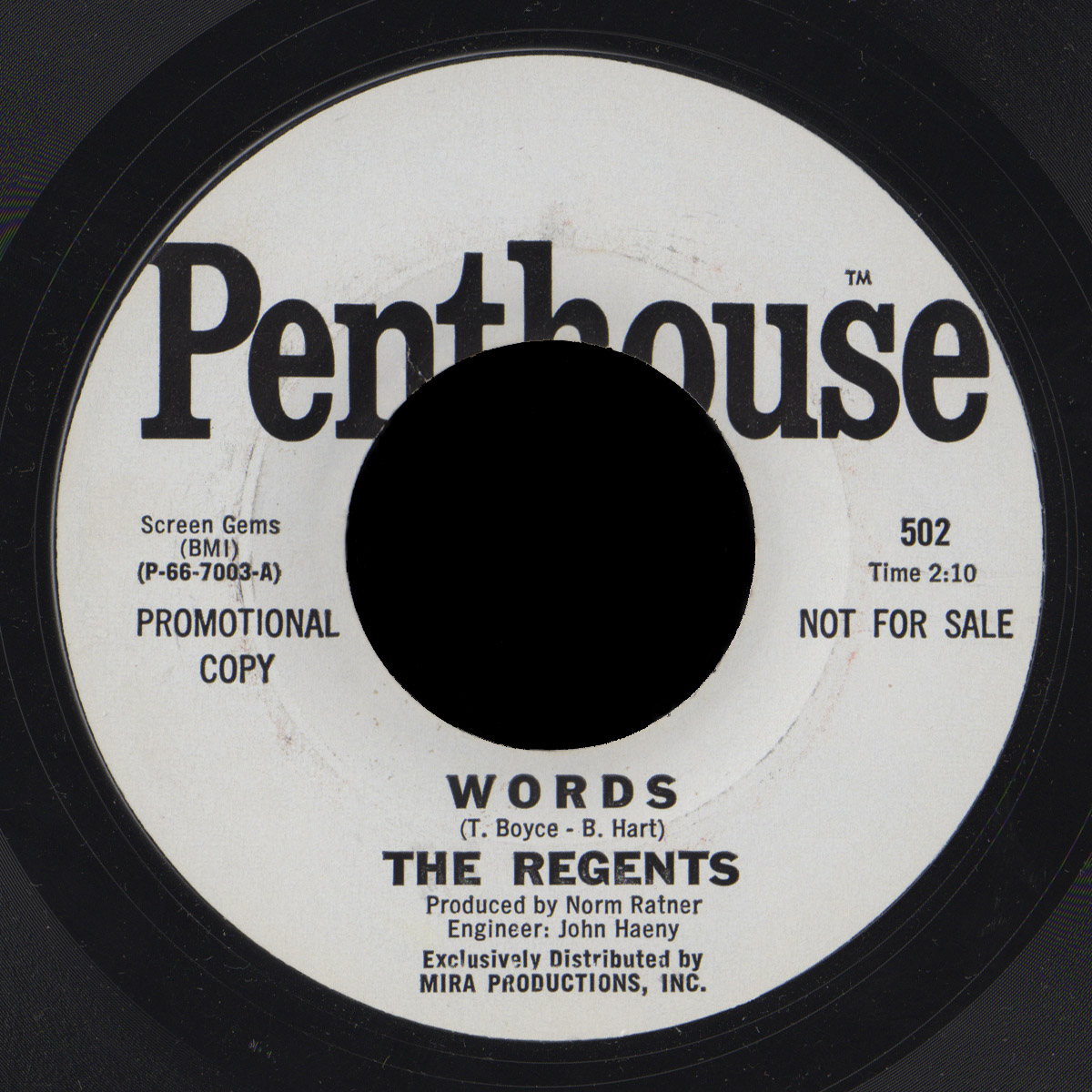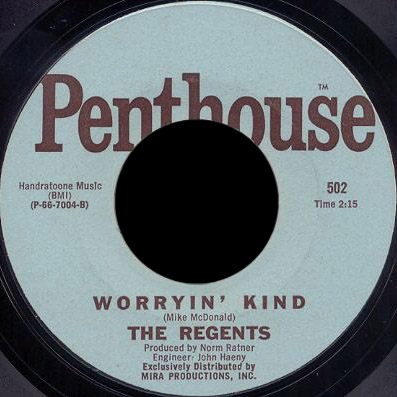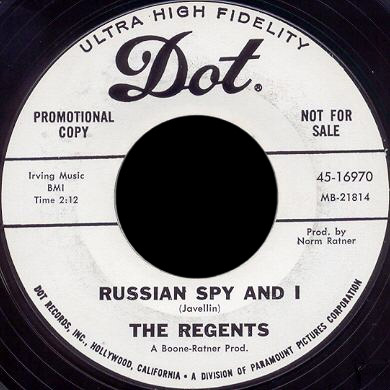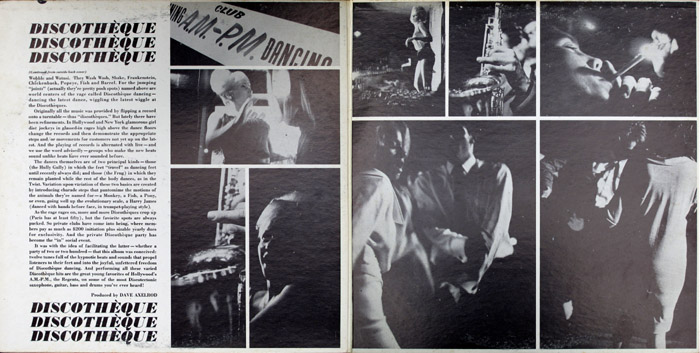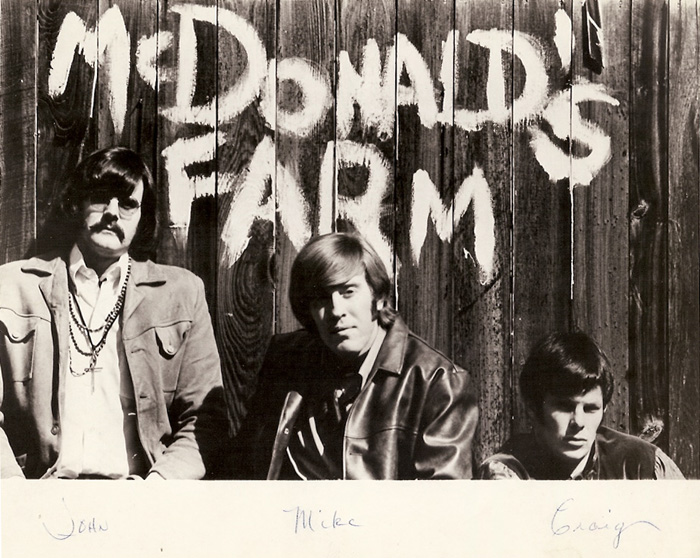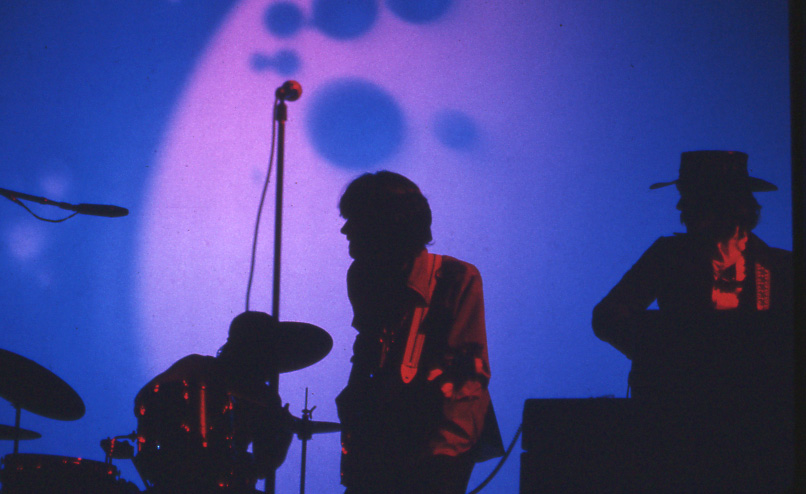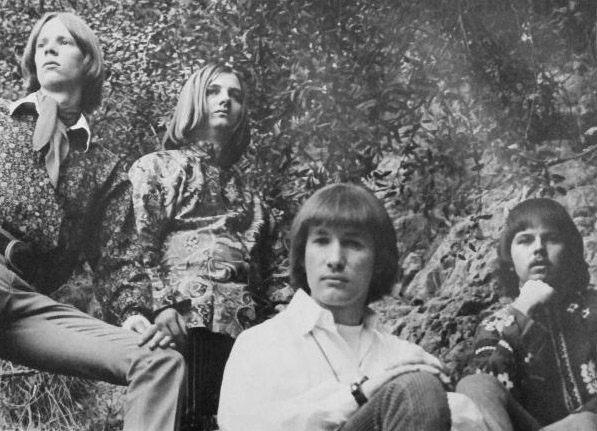Joey Newman (lead guitar, keyboards, vocals)
Bob ‘B.J’ Jones (lead guitar, vocals)
David Price (rhythm guitar, vocals)
Randy Fuller (bass, guitar, vocals)
Don Poncher (drums, vocals)
1968
September Price (b. September 23, 1944, Ballinger, Texas, US) and Poncher (b. July 29, 1947, Chicago, Illinois, US) are recruited by former Buffalo Springfield drummer/vocalist Dewey Martin for his new group named The New Buffalo Springfield, alongside horn player Jim Price, bass player Bob Apperson and lead guitarist Gary Rowles. Apperson, Poncher, Jim Price and Rowles have been playing together in a club in Arizona, which is where Martin spots them, while David Price has previously worked with Austin blues group, The Chelsea, done TV work with the Monkees and played one gig with the L.A based-band, Armadillo. The band rehearses at a diner in Boulder, Colorado and performs at the club with The Everly Brothers for a week.
November (16) The group makes its official public debut at the HIC, Honolulu, Hawaii with The Turtles. Shortly afterwards, the band returns to the mainland and performs a date at the Exhibit Hall, the Community Concourse in San Diego.
(23) Billed as The Buffalo Springfield, Martin’s group plays at the Sound Factory in Sacramento, California with Mad River and Sanpaku.
(30) Once again billed as The Buffalo Springfield, the band performs at the Terrace Ballroom, Salt Lake City, Utah with The Sir Douglas Quintet. The set list includes a song by Spirit.
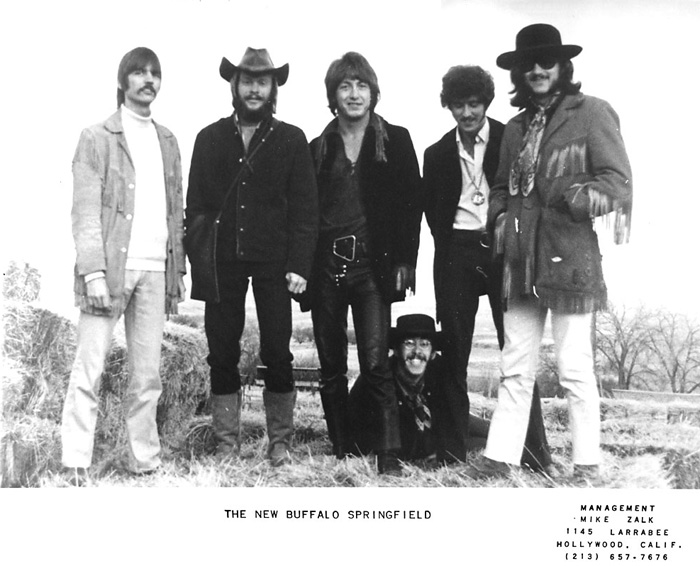
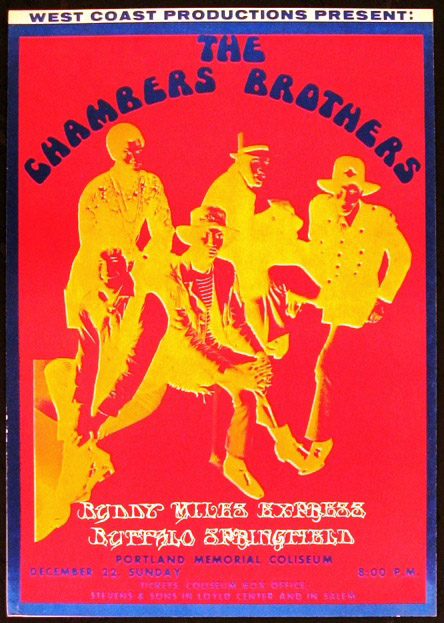
December (6) They play at the Swing Auditorium, San Bernardino, California with Eric Burdon & The Animals.
(7) Martin’s new version of The Buffalo Springfield appears at the Earl Warren Showgrounds, Santa Barbara, California with Three Dog Night.
(14) The band travels to Texas for a show at the Midwestern State University in Wichita Falls.
(20) Billed as The Buffalo Springfield they play at the Civic Center in Bakersfield, California with Gary Lewis & The Playboys.
(21) Travelling up to the Northwest, they appear at the Pacific Coliseum in Vancouver, British Columbia, Canada with The Chambers Brothers and The Buddy Miles Express.
(22) Billed as The Buffalo Springfield, they play at the Memorial Coliseum in Portland, Oregon with The Chambers Brothers and The Buddy Miles Express.
(23) Martin’s band is supported by White Hearts at the Evergreen Ballroom in Olympia, Washington, where it is billed as The Buffalo Springfield.
(26) Billed as New Buffalo Springfield, Martin’s band makes its Bay area debut at the Holiday Rock Festival, Cow Palace, San Francisco alongside Canned Heat, Steppenwolf, The Electric Prunes and others.
(27) Martin’s band appears at San Joaquin County Fairgrounds in Stockton, California. Gary Lewis & The Playboys cancel due to illness.
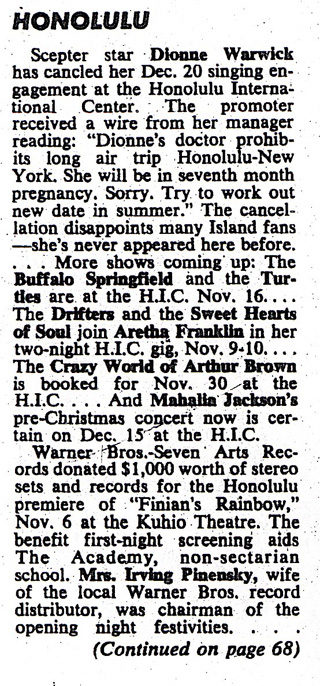
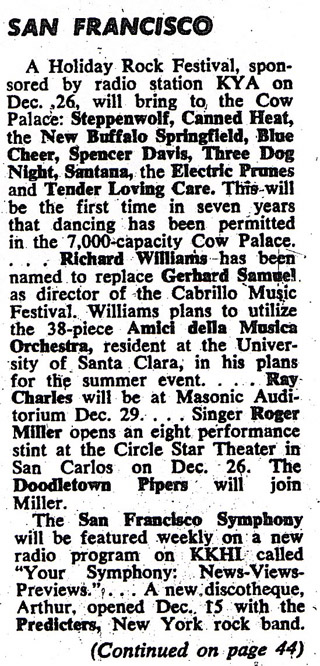
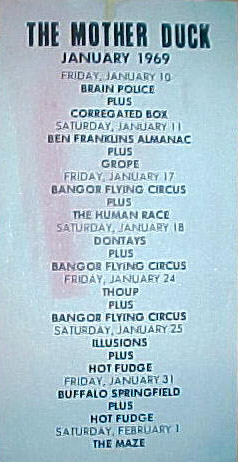
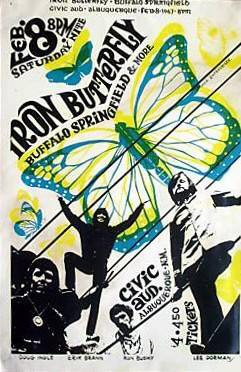
1969
January (11) Martin’s band appears at the San Diego Sports Arena, San Diego, California billed as The Buffalo Springfield.
(31) Billed again as The Buffalo Springfield, the band appears at the Mother Duck in Chicago with Hot Fudge in support.
February (8) Martin’s version of The Buffalo Springfield plays at the Civic Auditorium in Albuquerque, New Mexico with Iron Butterfly and Lincoln Street Exit.
(22) Billboard announces that an album is imminent on Atco but nothing transpires. Rowles leaves soon afterwards and takes some time out of playing before later in the year replacing Jay Donellan in Love, a position he was originally offered in September 1968. Apperson also departs for session work and is replaced by former Bobby Fuller Four member and solo artist Randy Fuller (b. January 29, 1944, Hobbs, New Mexico, US), while Jim Price quits to join Delaney & Bonnie. Don Poncher joins the exodus to do session work and Dewey Martin takes over the drum stool. Martin brings in lead guitarist Bob “B J” Jones (b. November 9, 1942, Woodbury, New Jersey) who has previously worked with Little Richard and the band Danny & The Saints.
March The new line up records some tentative tracks in a Hollywood studio down the hall from Neil Young who is working with Crazy Horse, but they are never released. Producer Tom Dowd oversees one session.
(31) – April (2) Martin returns with The New Buffalo Springfield name, and a line up now comprising Randy Fuller, Dave Price and Bob “B J” Jones is one of the headliners at the Teen Expo, Santa Clare Fairgrounds, San Jose with Santana, Iron Butterfly and others. The group then changes name briefly to Blue Buffalo.
April (31) Martin’s group, billed as New Buffalo Springfield, plays at the Eureka Municipal Auditorium in Eureka, California with Mixed Company Coffee and Devine Madness.
June The band is expanded with the addition of lead guitarist Joey Newman (b. Vern Kjellberg, August 29, 1947, Seattle, Washington), formerly a member of Don & The Goodtimes, The Liberty Party and Touch.
(7) Billed as The Buffalo Springfield, they play at the Dunes in Westport in Washington.
(21) Again billed as The Buffalo Springfield, the band appears at Chehalis Civic Auditorium, Chehalis, Washington with Slugg.
(28) Billed as New Buffalo Springfield, they perform at Casey’s in Lewiston, Idaho.
July (3) Billed as The Buffalo Springfield, they perform at the Armory in Astoria, Oregon.
(5) Martin’s outfit appears at the Evergeen Ballroom, Olympia, Washington.
(8-9) New Buffalo Springfield appear at the Seattle Center Arena with Paul Revere & The Raiders.
(11) The band plays at the Breakthru, Tacoma, Washington.
(19) The New Buffalo Springfield appear at the Happening, Seattle, Washington. While on the Northwest tour, the group drives along Highway 395 and comes across a town in Grant County, Oregon with a newspaper called The Blue Mountain Eagle. The band fires Dewey Martin and returns to Los Angeles to sign a deal with Atlantic Records subsidiary label, Atco Records. Ahmet Ertegun signs the band personally.
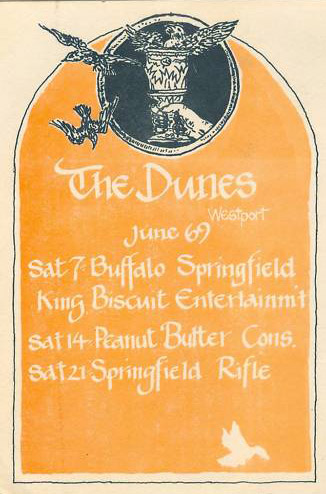
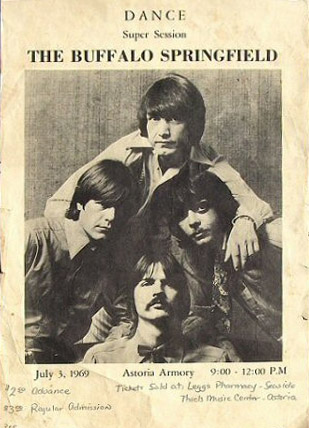
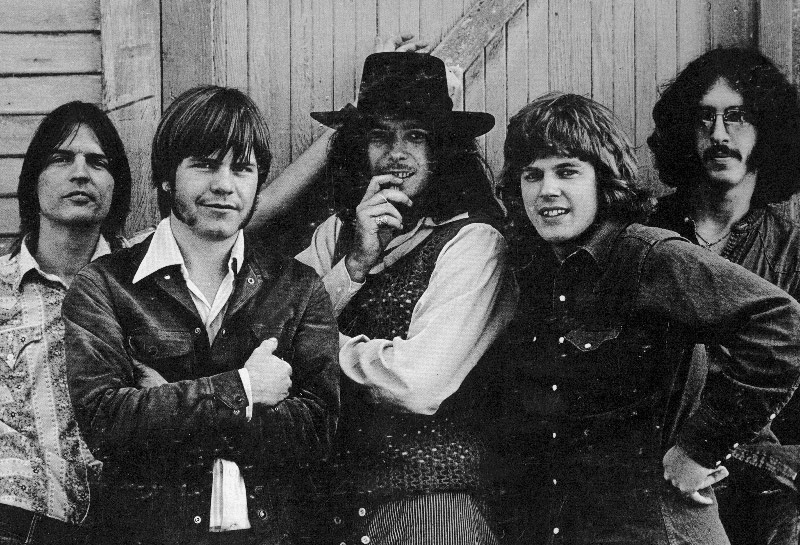
August Back in Los Angeles, the group adds Don Poncher from the original New Buffalo Springfield line up on drums in place of Martin and takes on the name Blue Mountain Eagle after the newspaper the group has seen on the road.
(24) Studio session logs suggest they record some demo tracks at Wally Heider’s studio in Los Angeles. The tracks include “Trivial Sum” (which the band will complete at a later date) and songs which may have been completed and later released under a different name. The tracks are: “Rock & Roll Please”, “Fourth Time Around”, “Road’s End”, “David’s Song”, “B.J. #1”, “¾ Thing” and “Joey’s Song”.
September (13) Having debuted at the HIC in Honolulu (where it is billed by manager Mike Zalk as New Buffalo Springfield), Blue Mountain Eagle support Santana at the Memorial Auditorium in Sacramento, California.
December (1) Blue Mountain Eagle record their debut album in one day at Wally Heider’s studio in Los Angeles.
(27-29) The band appears at the Pozo, San Luis Obispo on a bill featuring The Byrds, Eric Mercury, Spirit, Vanilla Fudge and others.
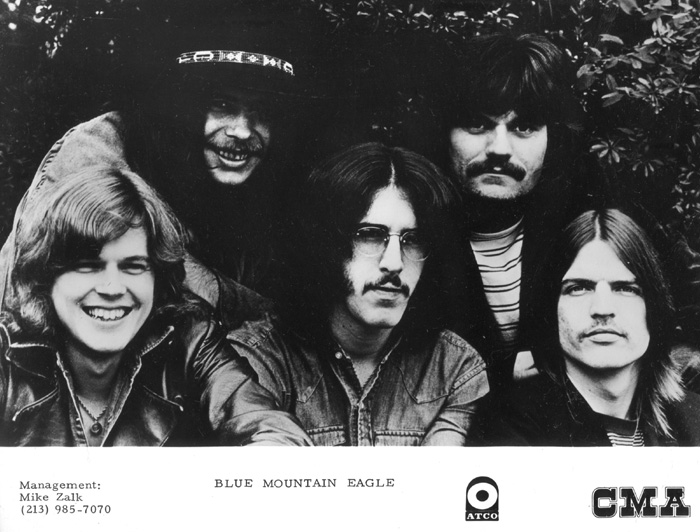
1970
February The group supports Love and Eric Burdon & War at the Ice Palace, Las Vegas.
(3-8) Blue Mountain Eagle play at the Brass Ring, Sherman Oaks, California with Blue Rose.
(10-15) They return to the Brass Ring for a second set of shows with Blue Rose.
March (21) The band performs at the Salem Armory Auditorium, Salem, Oregon.
(26-28) The group participates in the Southwest ’70 Peace Festival near Lubbock, Texas, with Vanilla Fudge, Muddy Waters, Canned Heat, The Flock, Truth, Joe Kelley’s Blues Band, Johnny Winter and many others.
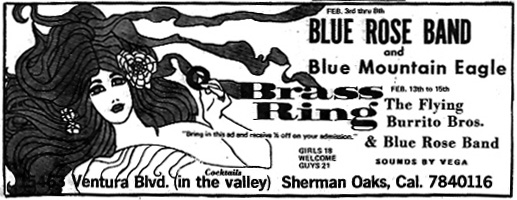
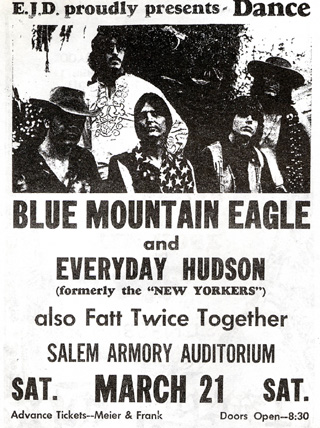
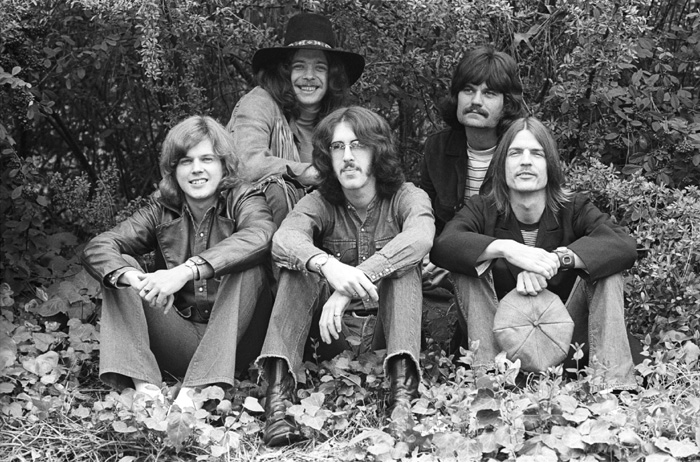
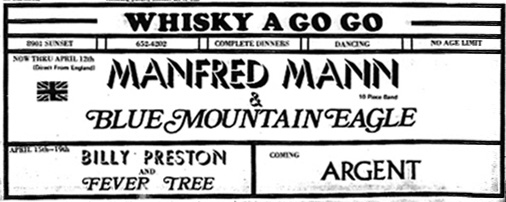
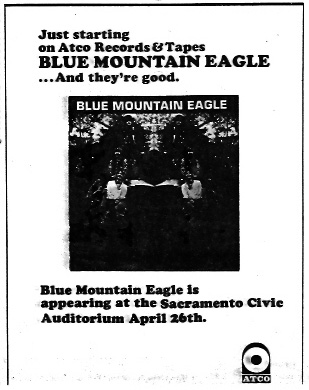
April (8-12) Blue Mountain Eagle support Manfred Mann Chapter 3 at West Hollywood’s Whisky A Go Go. Randy Fuller leaves and joins Dewey Martin & Medicine Ball, appearing on its lone album. He is replaced by Dave Johnson (b. October 21, 1945, Burbank, California, US), who has previously worked with Dr John and Alice & The Wonderland Band alongside singer Joanne Vent and future Redbone guitarist Tony Bellamy. The group write and arrange material for a second album over the next few months but none of the tracks are recorded.
(24) The new line up plays at the Pusi-Kat, San Antonio, Texas.
(26) Blue Mountain Eagle support Jimi Hendrix and The Buddy Miles Express at the ‘Cal Expo’, Sacramento, California.
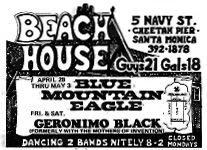
(28) – May (3) Blue Mountain Eagle plays at the Beach House, Cheetah Pier, Santa Monica.
May Their eponymous debut album is released, highlighting a mixture of acoustic and hard rock styles that is reminiscent of The Buffalo Springfield.
(2) Blue Mountain Eagle support Country Joe & The Fish and Spirit at San Diego Sports Arena, San Diego.
(9) The band opens for Pink Floyd at the Terrace Ballroom, Salt Lake City, Utah.
(15) Blue Mountain Eagle appear at Fresno Convention Hall, California with Canned Heat and Sweetwater.
June (2-7) The group appears at the Beach House, Cheetah Pier, Santa Monica.
(5) Billboard magazine reports that the band appears at the Olympic Auditorium in Los Angeles.
(8) Blue Mountain Eagle record a lone track, a cover of Stephen Stills’s “Marianne”.
July (11) The band appears at Bullock’s Department Store in downtown L.A. with Poco, Blues Image and Southwind.
(18) The group replaces Blue Cheer at Terrace Ballroom, Salt Lake City, Utah on a bill that also features Love and Fever Tree.
August The band releases the double A-side single “Marianne”, which is given favourable reviews. Studio logs also suggest the group records a track called “Rest” but it is never released.
October Blue Mountain Eagle’s final gig is at a ballroom in Dave Price’s hometown, San Antonio, Texas.
NovemberPoncher leaves to join Love for live work and the band splinters. Johnson briefly works with Lee Michaels before reuniting with Jones in Sweathog, while Price does sessions for ex-Sir Douglas Quintet keyboard player Augie Meyer.
1972
January Sweathog’s eponymous debut album is released, but is not a success. Having appeared on sessions for a Love album that is eventually released in the 2000s by Sundazed as Love Lost, Poncher stays with Arthur Lee and his next project, Band Aid, helping him record the Vindicator album. Poncher then joins Blue Rose with Terry Furlong (who wrote songs for Blue Mountain Eagle) and ex-Illinois Speed Press member John Uribe.
June Blue Rose’s sole eponymous album appears on Epic Records. Poncher continues to do session work throughout the ‘70s and ‘80s, working with people like Augie Meyer, Joe Cocker, Jim Price, Genya Raven and Chris Jagger. He currently plays with Balonius Bunk in the San Fernando Valley.
1975
September Newman emerges with new outfit, Bandit, who release an album for ABC Records. Having recorded a second album with Sweathog without Jones, Johnson puts together a new band with radio legend Jimmy Rabbit called Rabbit and Renegade, which records an album for Capitol Records, produced by Waylon Jennings.
1977
Newman forms Stepson, who release an album for ABC Records, before later recording two gospel albums. Newman later works with Michael Lloyd, the Osmonds, Bryan MacLean, Shaune Cassidy and with Jimmy Johnson on his Sheena Easton tour. Jones meanwhile, surfaces with The Demons, who issue an eponymous album on Mercury.
Sources:
Einarson, John and Furay, Richie. For What It’s Worth – The Story Of Buffalo Springfield, Quarry Press Inc, 1997, pages 279-280.
Hounsome, Terry. Rock Record #6, Record Researchers Publications, 1994.
Housden, David Peter. The Castle – Love #9, 1995, page86.
Housden, David Peter. The Castle – Love #10, 1996, page 27.
Joynson, Vernon. Fuzz, Acid & Flowers, Supplement, September 1997, page 419.
Povey, Glen and Russell, Ian. Pink Floyd In The Flesh – A Complete Performance History, Bloomsbury, 1997, page 94.
Ruppli, Michel. Atlantic Records – A Discgraphy, volume 2, Greenwood Press, 1979, pages 320 and 366 and volume 3, page 53.
Shapiro, Harry and Glebbeek, Caesar. Electric Gypsy, Mandarin, 1995, page 738.
Billboard, November 16, 1968, page 67; December 28, 1968, page 43; February 22, 1969, page 3 and August 15, 1970, page 28.
Los Angeles Free Press, February 6, 1970; May 1, 1970; May 27, 1970 and June 5, 1970.
Variety, August 19, 1970, page 46.
Thanks to Dave Price, Joey Newman, Bob Jones, Randy Fuller, Don Poncher and Dave Johnson for contributing to the band’s story. Thanks to Jerry Fuentes and Neil Skok for help with some of the New Buffalo Springfield dates. Huge thanks to Steve Finger at the LA Free Press for help with concert posters.
I have tried to ensure that this article is as accurate as possible, but some data is difficult to verify. If anyone is able to supply any additional information or correct any errors, please contact me at Warchive@aol.com
Copyright © Nick Warburton. All Rights Reserved. No part of this article may be reproduced or transmitted in any from or by any means, without prior permission from the author.

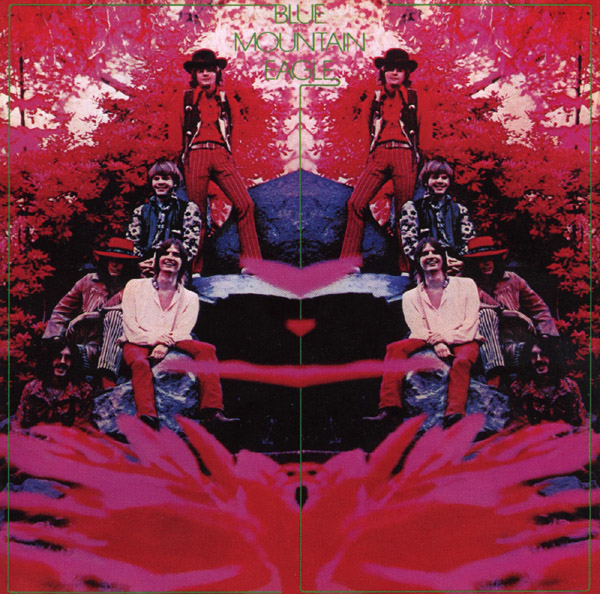
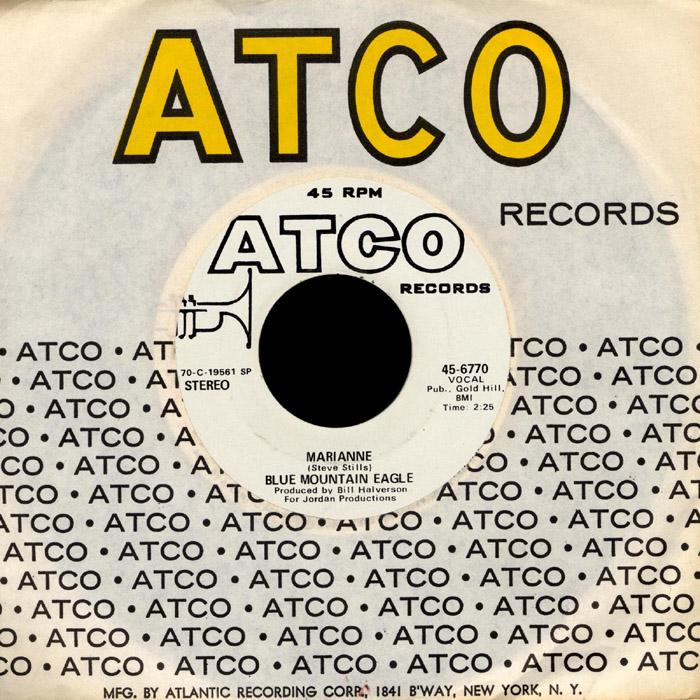
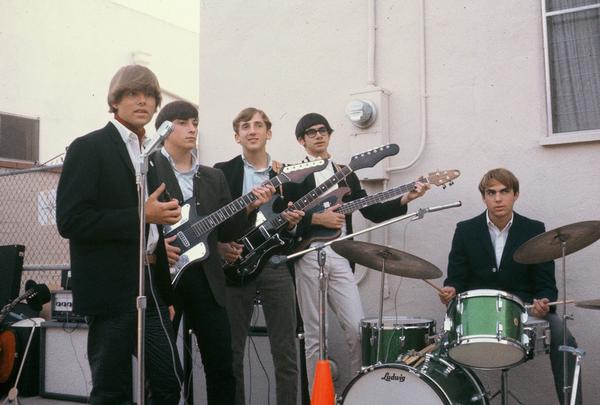
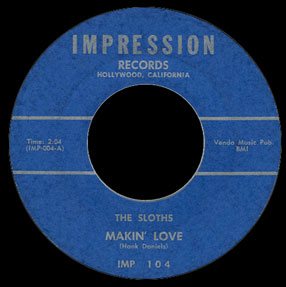
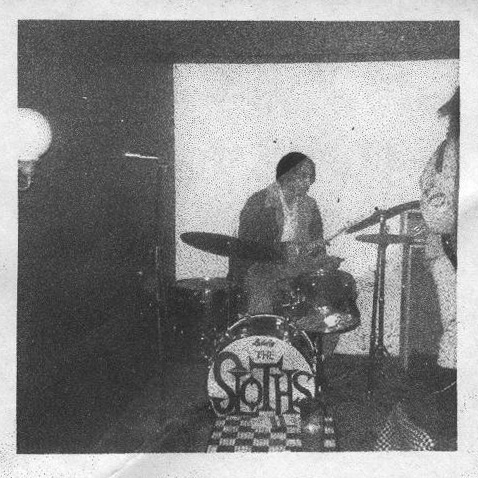
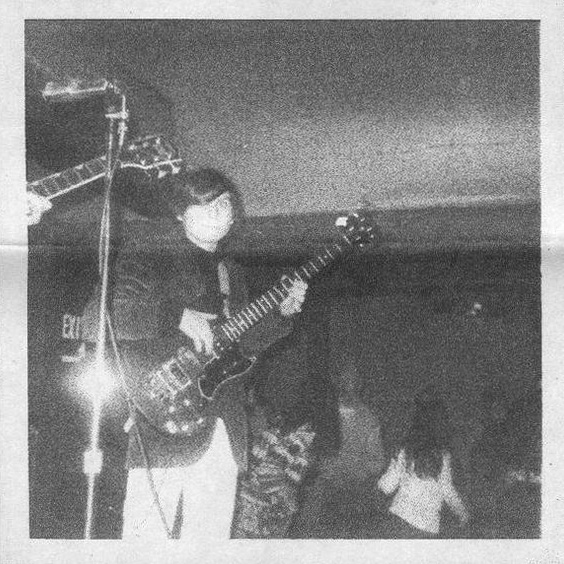
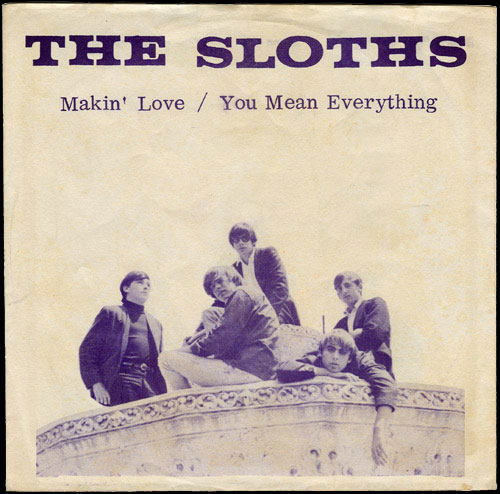
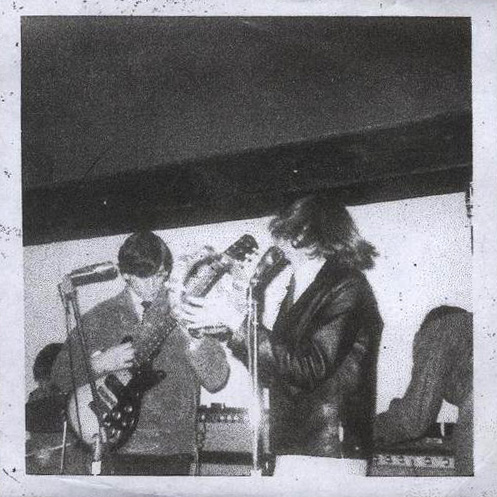
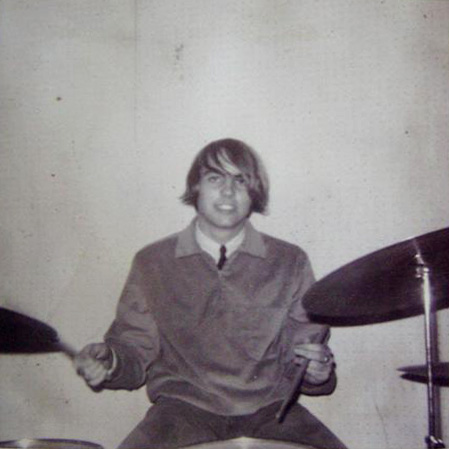
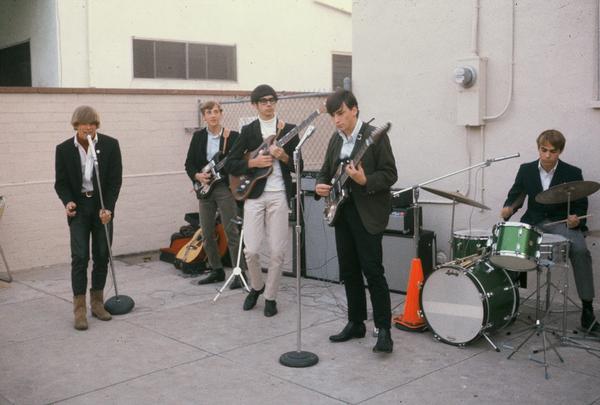
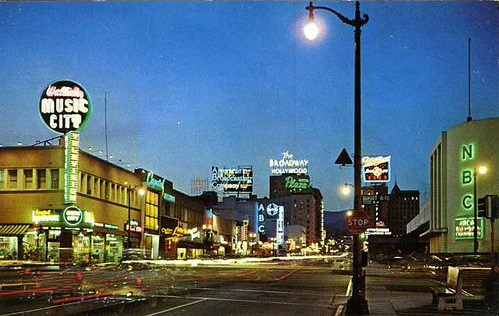
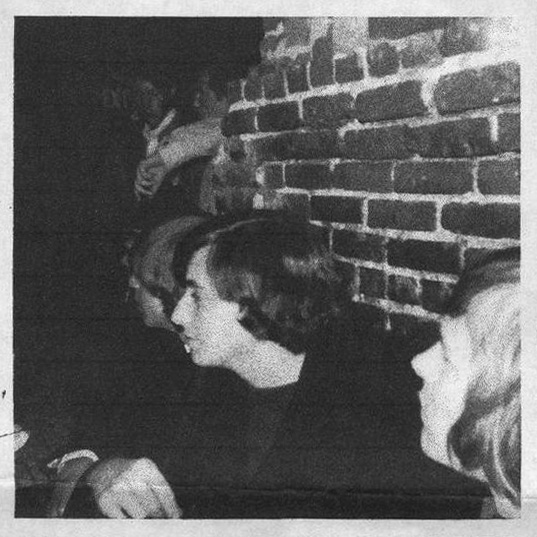
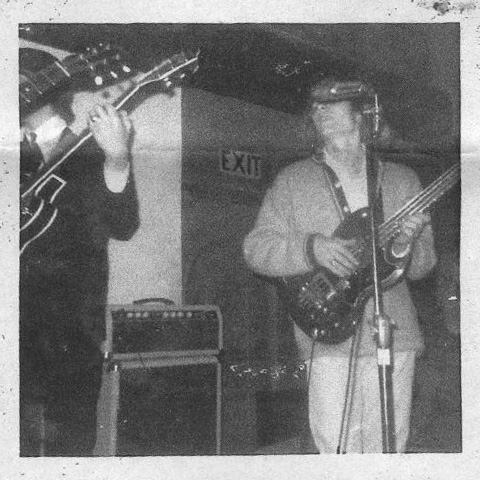
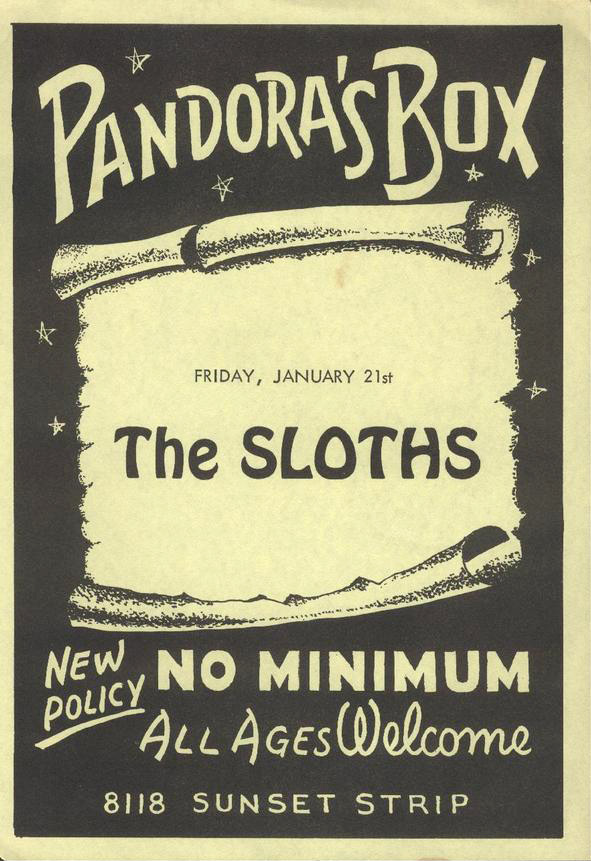
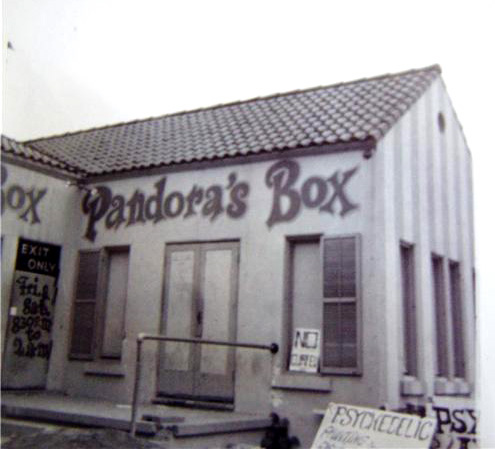
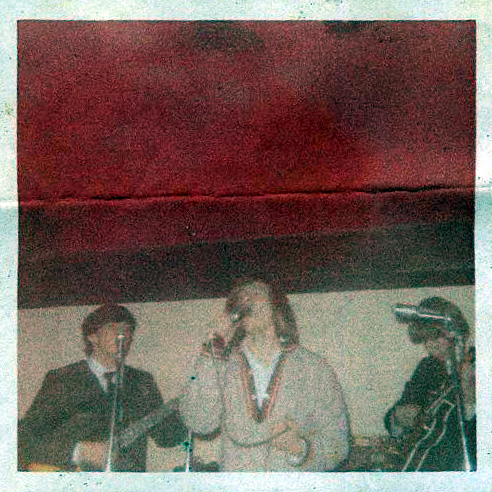
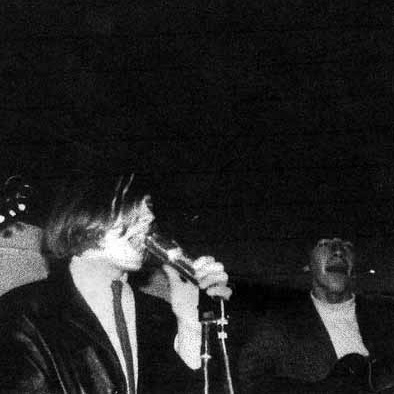
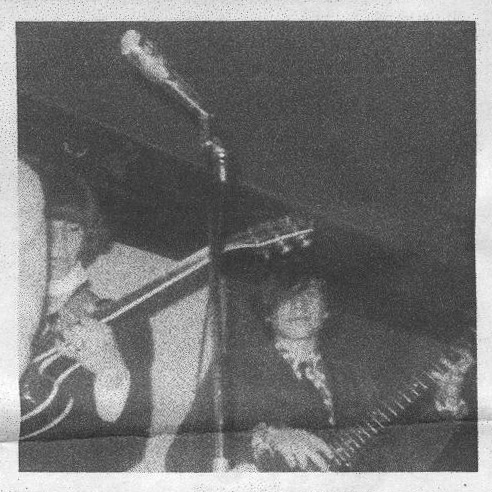
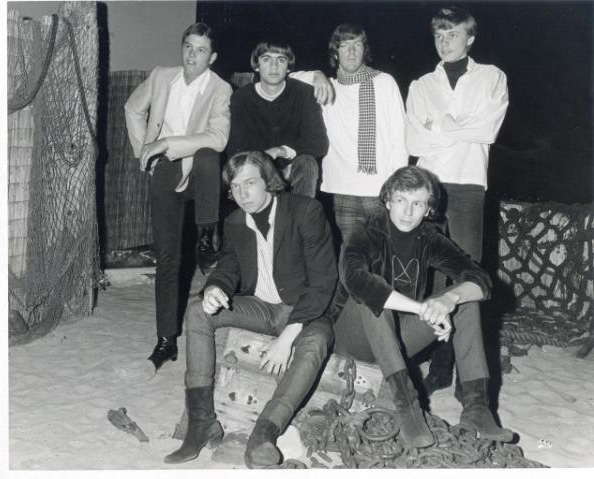

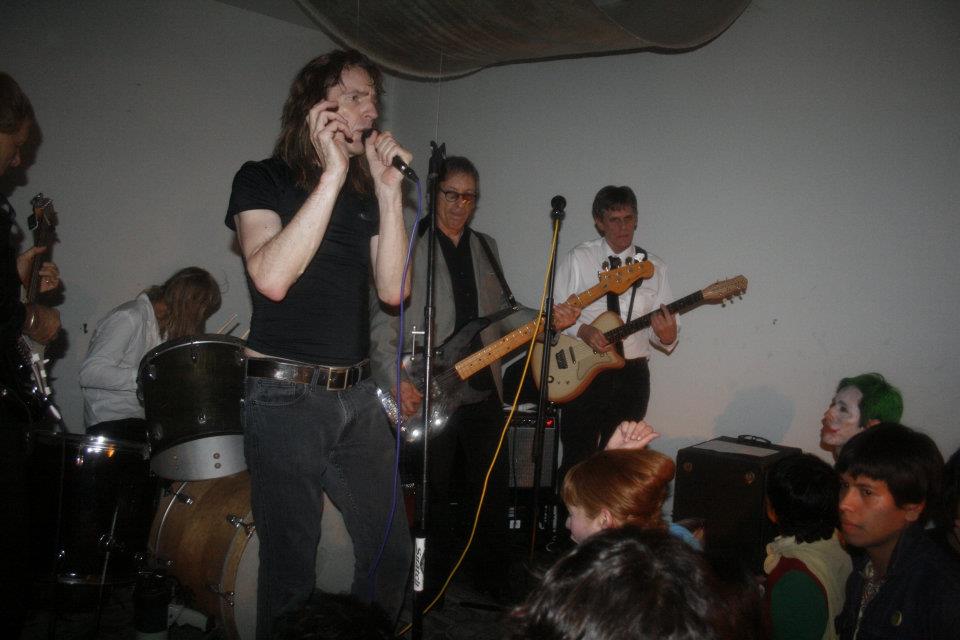
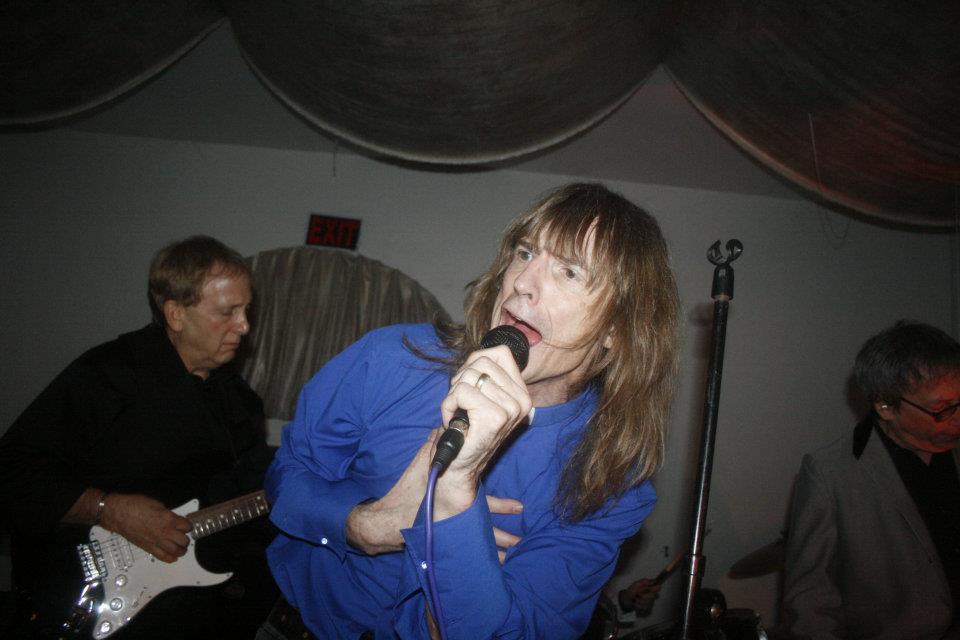
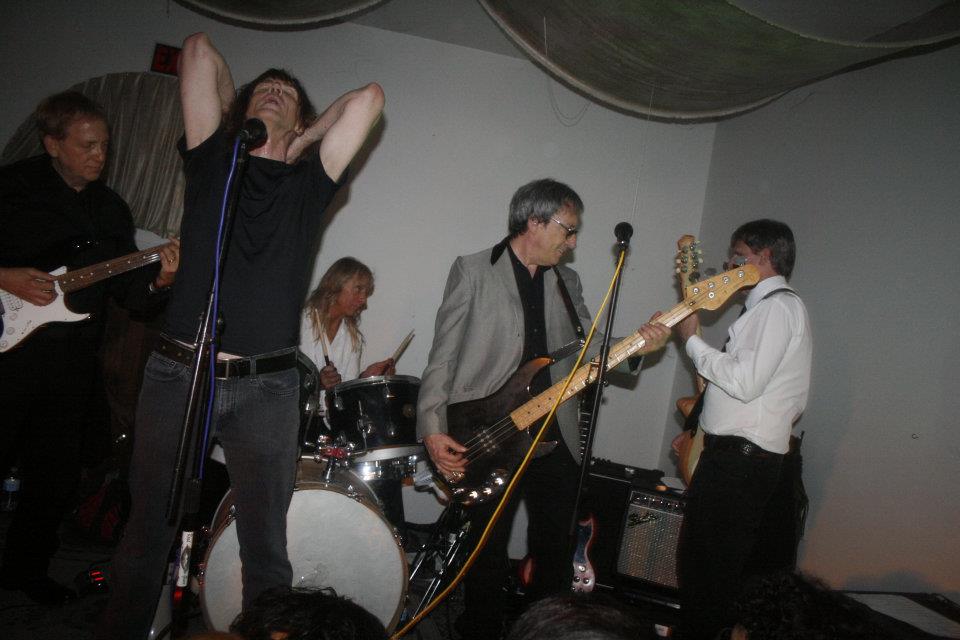
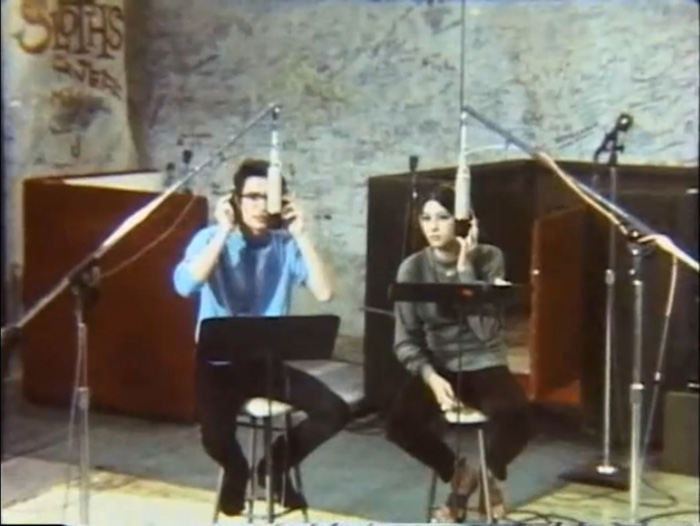
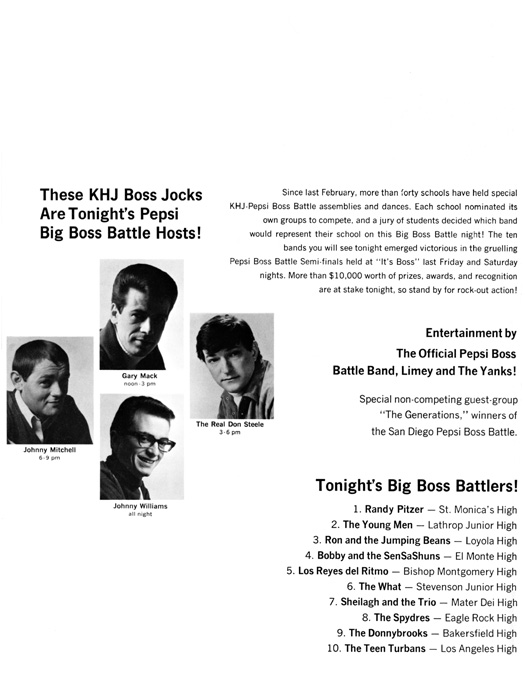
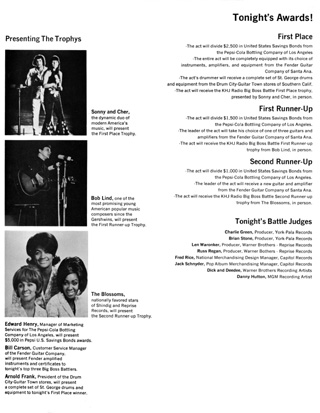
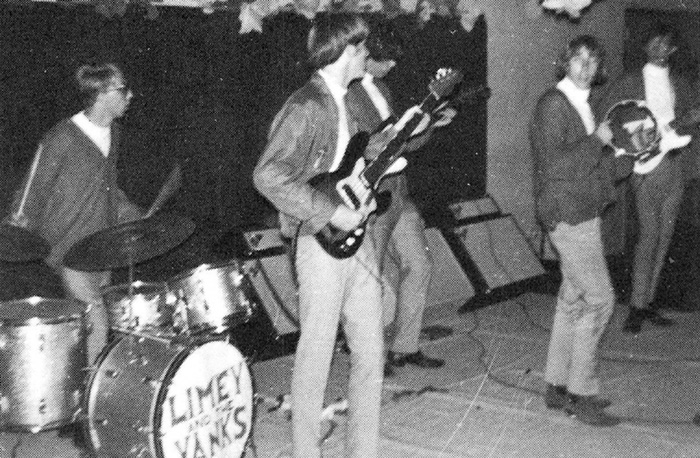

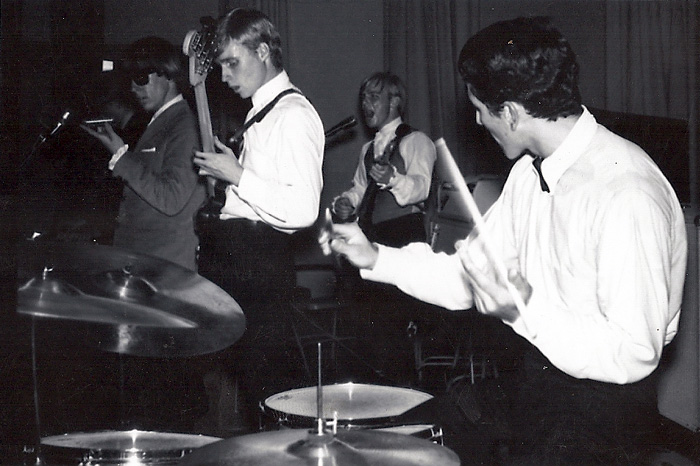
 The John English III & the Heathens 45 on Sabra, “I Need You Near” is one of the rarest and most highly rated of any mid-60s rock releases. I’ve covered John English in some detail on my site, but now I’d like to give the Heathens their own page, as most of their history comes after English left the group.
The John English III & the Heathens 45 on Sabra, “I Need You Near” is one of the rarest and most highly rated of any mid-60s rock releases. I’ve covered John English in some detail on my site, but now I’d like to give the Heathens their own page, as most of their history comes after English left the group.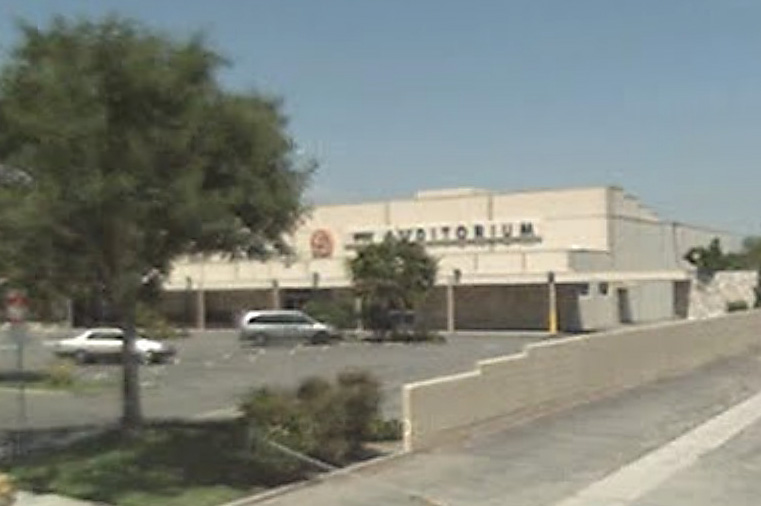
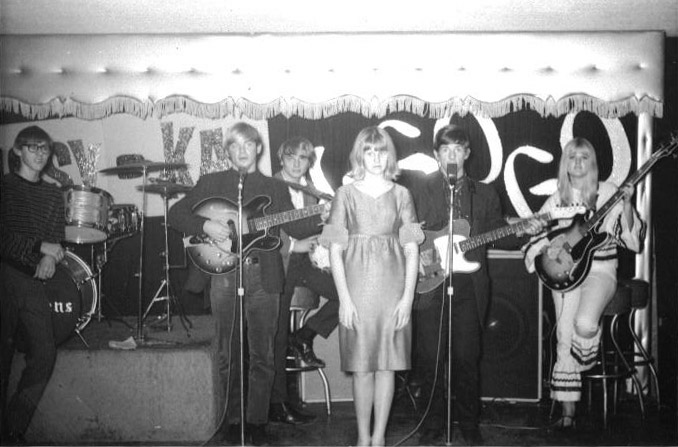
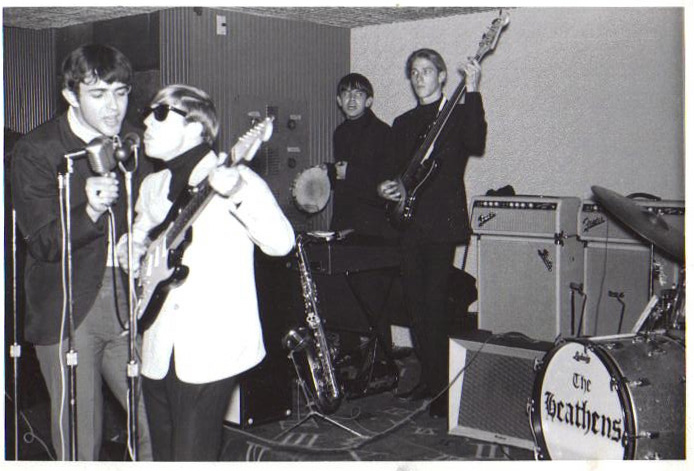
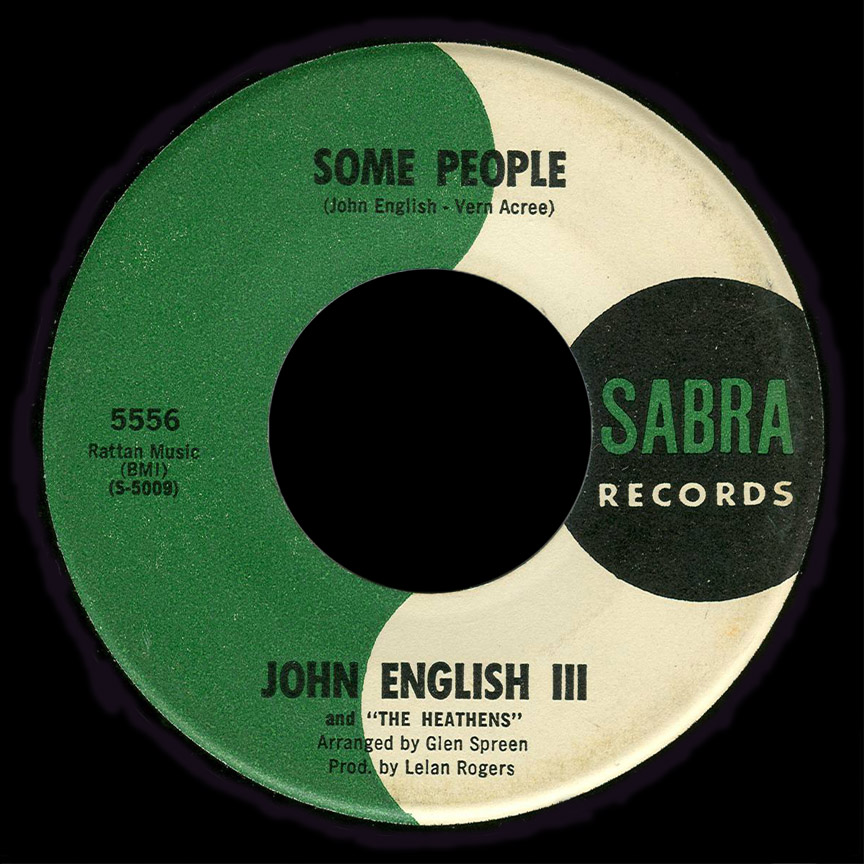 As John related the story, someone named Brian who had done PR work for the Beatles brought Lelan Rogers to see the Heathens show at Pandora’s Box. According to John, Lelan had them record three or four sides, but only two were ever issued.
As John related the story, someone named Brian who had done PR work for the Beatles brought Lelan Rogers to see the Heathens show at Pandora’s Box. According to John, Lelan had them record three or four sides, but only two were ever issued.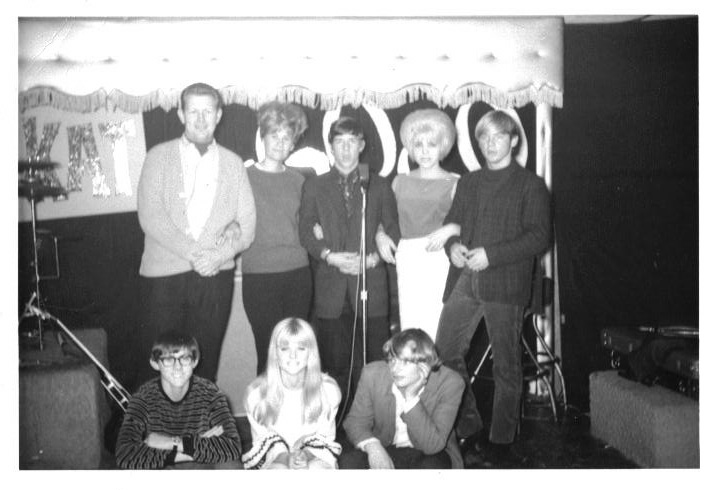
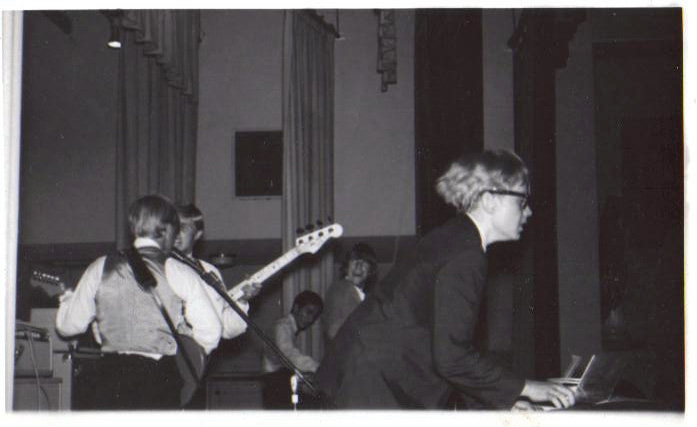
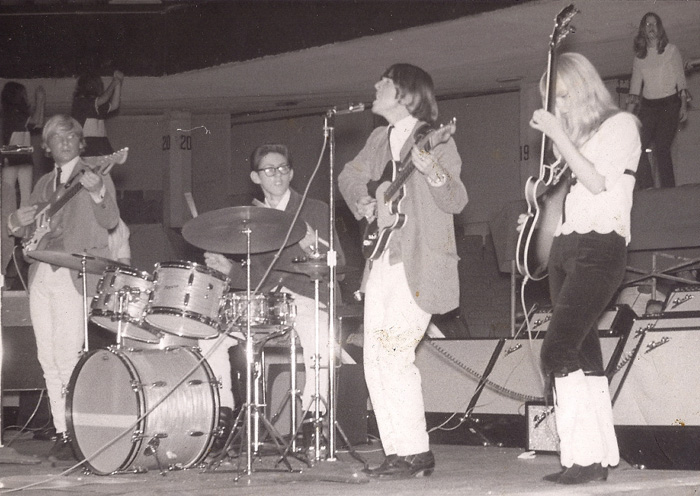
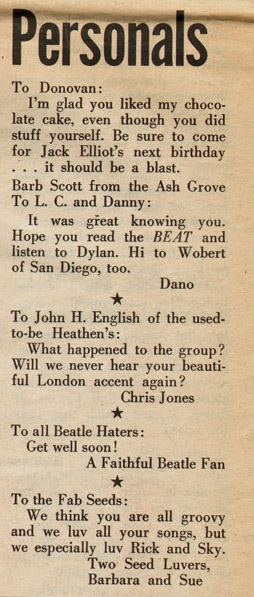
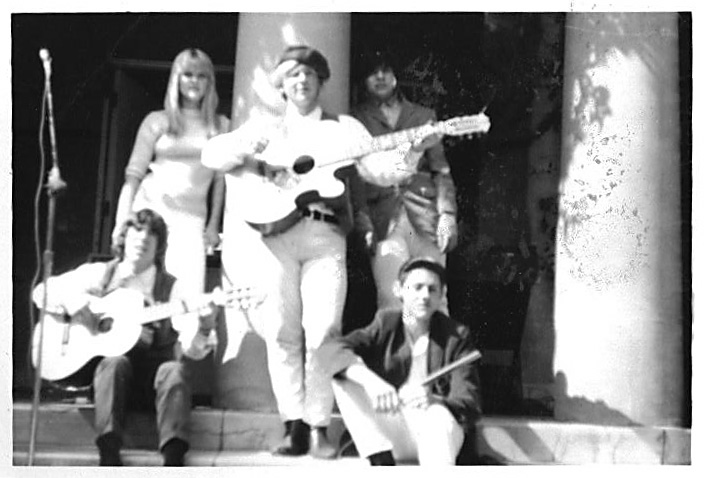
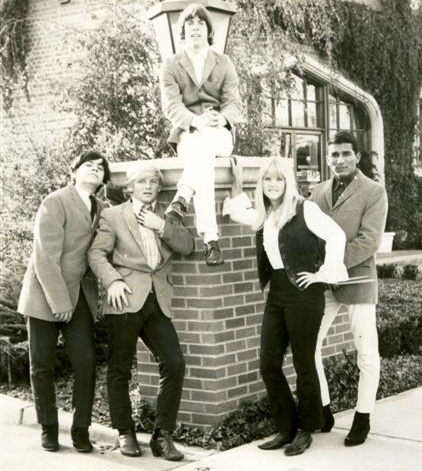
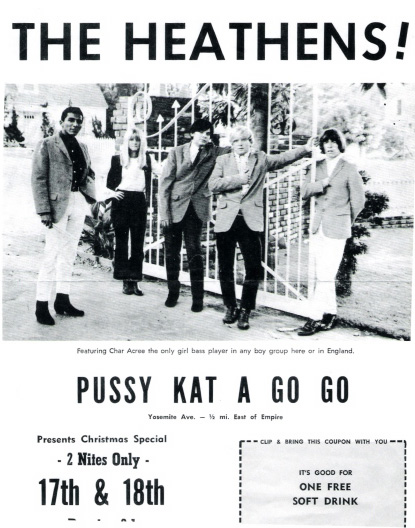
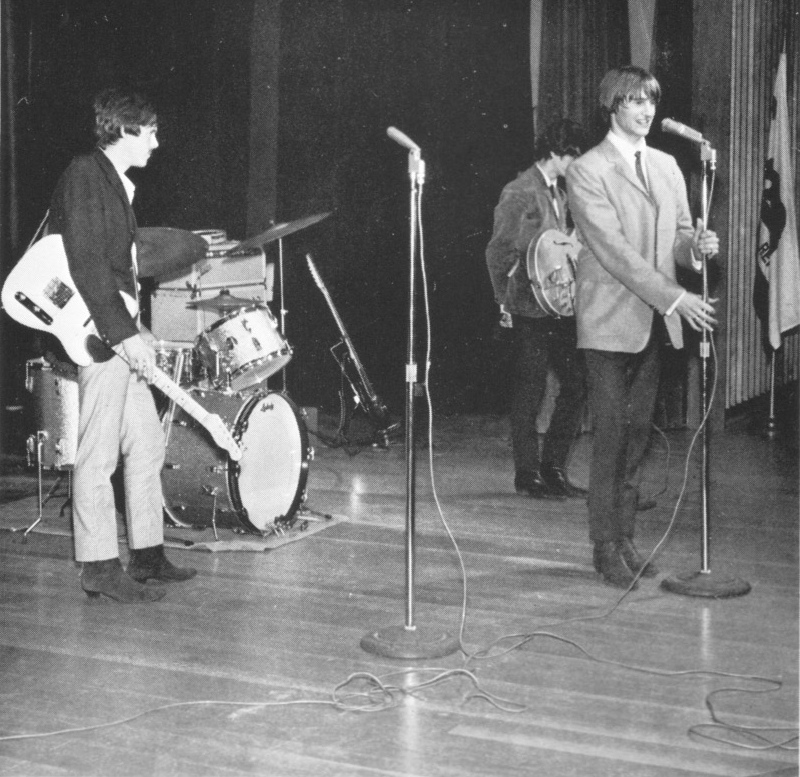
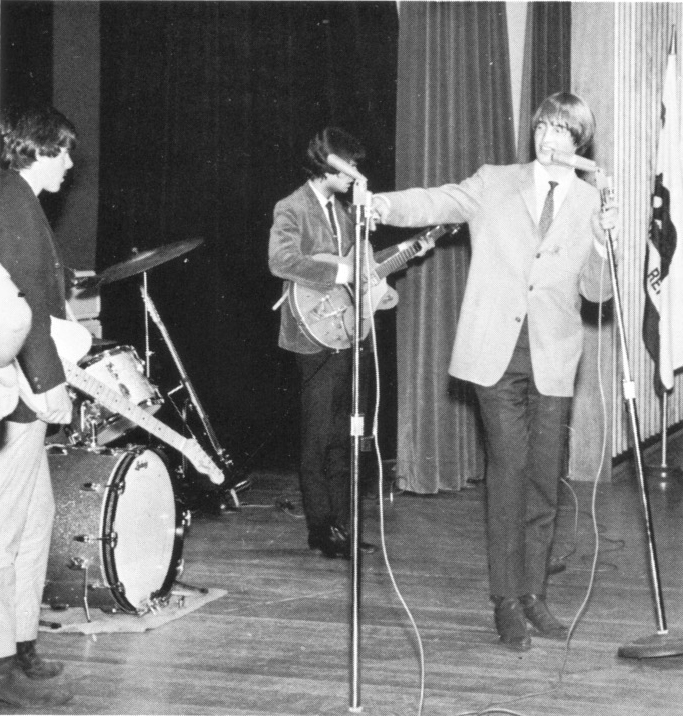
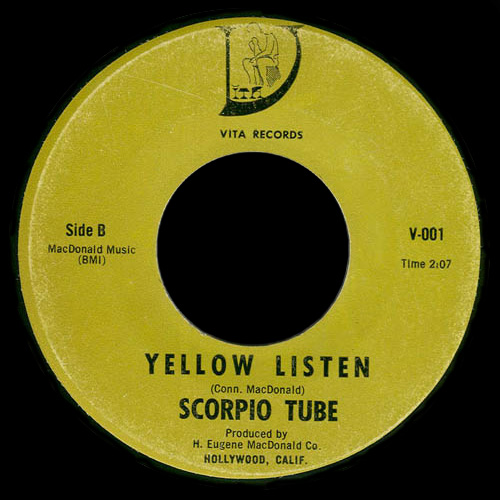 Dan Nielsén, who had conducted the interview with John Ford of the
Dan Nielsén, who had conducted the interview with John Ford of the 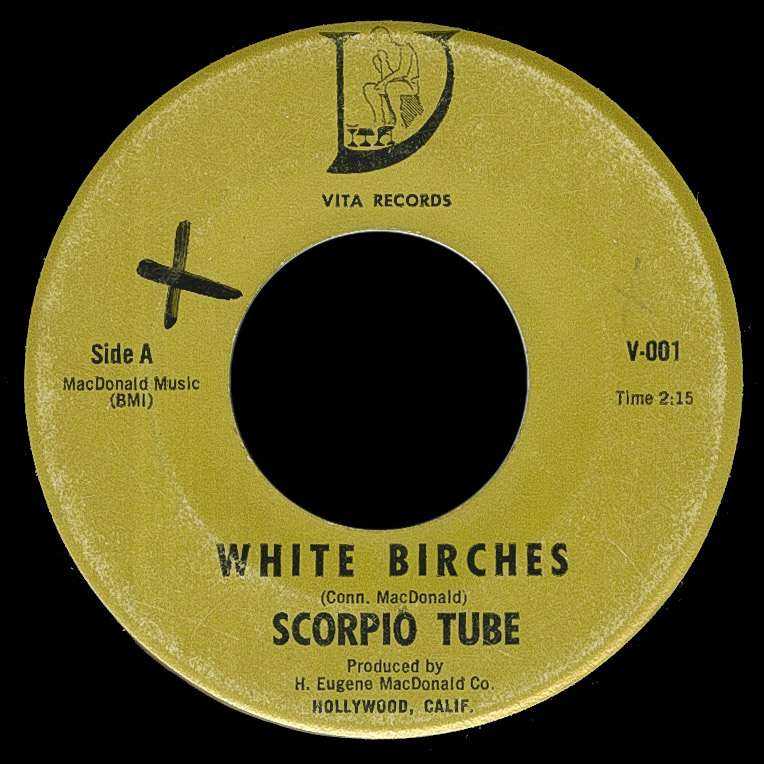
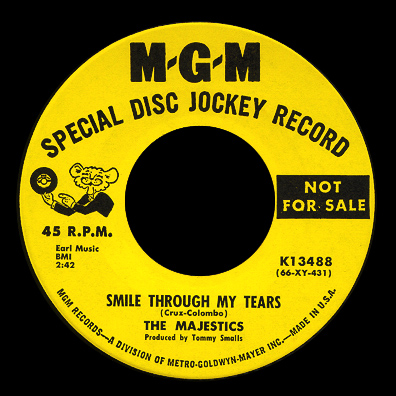 Mop Top Mike suggested I cover the Majestics, an unknown group who cut this one 45 for MGM in 1965. Hopefully we’ll be able to find some more info on this band.
Mop Top Mike suggested I cover the Majestics, an unknown group who cut this one 45 for MGM in 1965. Hopefully we’ll be able to find some more info on this band.